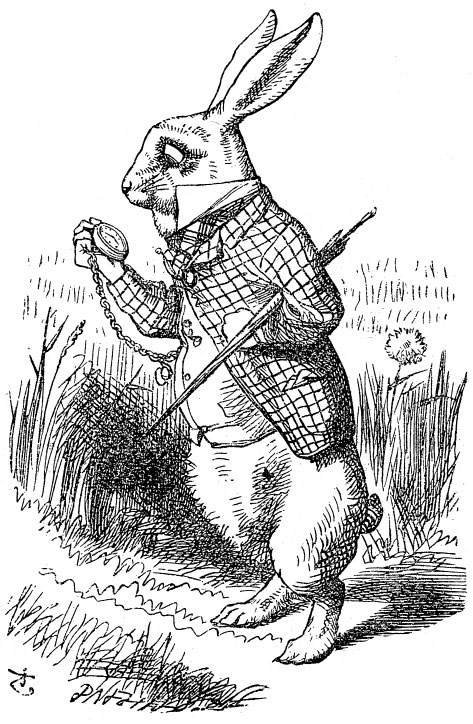After reading Alice in Wonderland and Through the looking Glass I noticed Lewis Carroll’s intent to generate themes similar to each other in both novels. Drawing in on the ideas of nonsense and sense, and building on themes regarding identity. Although written years apart from each other Alice is at the center of both stories. This latter story, Through the looking glass, was more logical than the first and differed from it in both its style and direction.
At the introduction of Alice in Wonderland she finds herself in the "other" nonsensical world. A world very different from her reality, that being one of an Victorian culture. Alice enters this world, but it is very different in each of the stories. In Alice's Adventures in Wonderland, her curiosity and boredom leads her to follow the White Rabbit as he rushes passed her. A similar curiosity brings Alice through the looking glass when she notices lily ( one of the pawns ) crying. The fact that Carroll made lily a pawn reflects her her age, sobbing as Alice once did as a young girl upon her first arrival in Wonderland. Crying out of frustration and confusion after finding herself growing and shrinking at various stages. Something that Carroll does not repeat in Through the Looking Glass giving Alice some stability. Yet allowing her to run into the must unstable of a person, Humpty dumpty himself while through the looking glass.
Lewis Carroll Gives us the poem Jabberwocky. Some consider this poem to be one of Carroll’s nonsensical poems however when analyzed and put into comparison with the theme of the novel the poem makes as a warning. Letting children know that they will soon grow into adults reflecting Carroll’s theme of journeys showed to the reader in both Wonderland and Through the Looking Glass. The boy setting out to defeat “IT“, is our journey through life trying to get through our trials. The dad is like our family and friends who encourage us to make good decisions and persevere. The defeat of the jabberwocky is our overcoming of sin and temptation. Our speaker isn't from any land that we know. He knows about animals called borogroves and bandersnatches, these nonsensical species; As Alice enters this land unknown to her with animals and beings that may or may not truly exist. This poem lives as an warning for Alice to be cautious.
Lewis Carroll presents the conflict with identity all through out both novels. We see Alice walking through the forest lost; according to the guard. “…he double checks looking at her, first through a telescope, then through a microscope, and then through an opera- glass. At last he said, 'You're traveling the wrong way.” Like a young girl on the wrong path, heading to a place where people aren’t who or what they seem.
'So young a child,' said the gentleman sitting opposite to her (he was dressed in white paper), 'ought to know which way she's going, even if she doesn't know her own name!”
In the scene the gentlemen dressed in white goes on to give Alice some wise advice to keep with her on her journey, he whispers, 'Never mind what they all say, my dear, but take a return-ticket every time the train stops.' This line in particular I think is important for Alice to remember, “always get a return ticket”. Allow yourself to always return back to who you are, in a sense letting Alice know that its fine to journey off and experience new things but as my mother always told me in my youth “remember who you are” because its easy to be changed by the world around you.
Alice enters the woods where things have no names and immediately forgets her own name. She meets a fawn and together they walk on. But when they reach an open spot the Fawn remembers that it is a deer and that Alice is human, and hurries away into the woods.
These reoccurring themes in both novels, identity in particular, are some that occurs in most young children’s life. All playing as Alice taking on the adventure of life and the transition / search of oneself .
LC
Wednesday, December 2, 2009
Subscribe to:
Post Comments (Atom)


This comment has been removed by the author.
ReplyDeleteI hadn't really had in mind a comparison of the novels but it's an interesting idea. However, I don't think you have a clear point of comparison yet. How is Alice's identity quest different, for example, in each narrative? Can you hone the thesis a bit more, and then work though the examples?
ReplyDelete